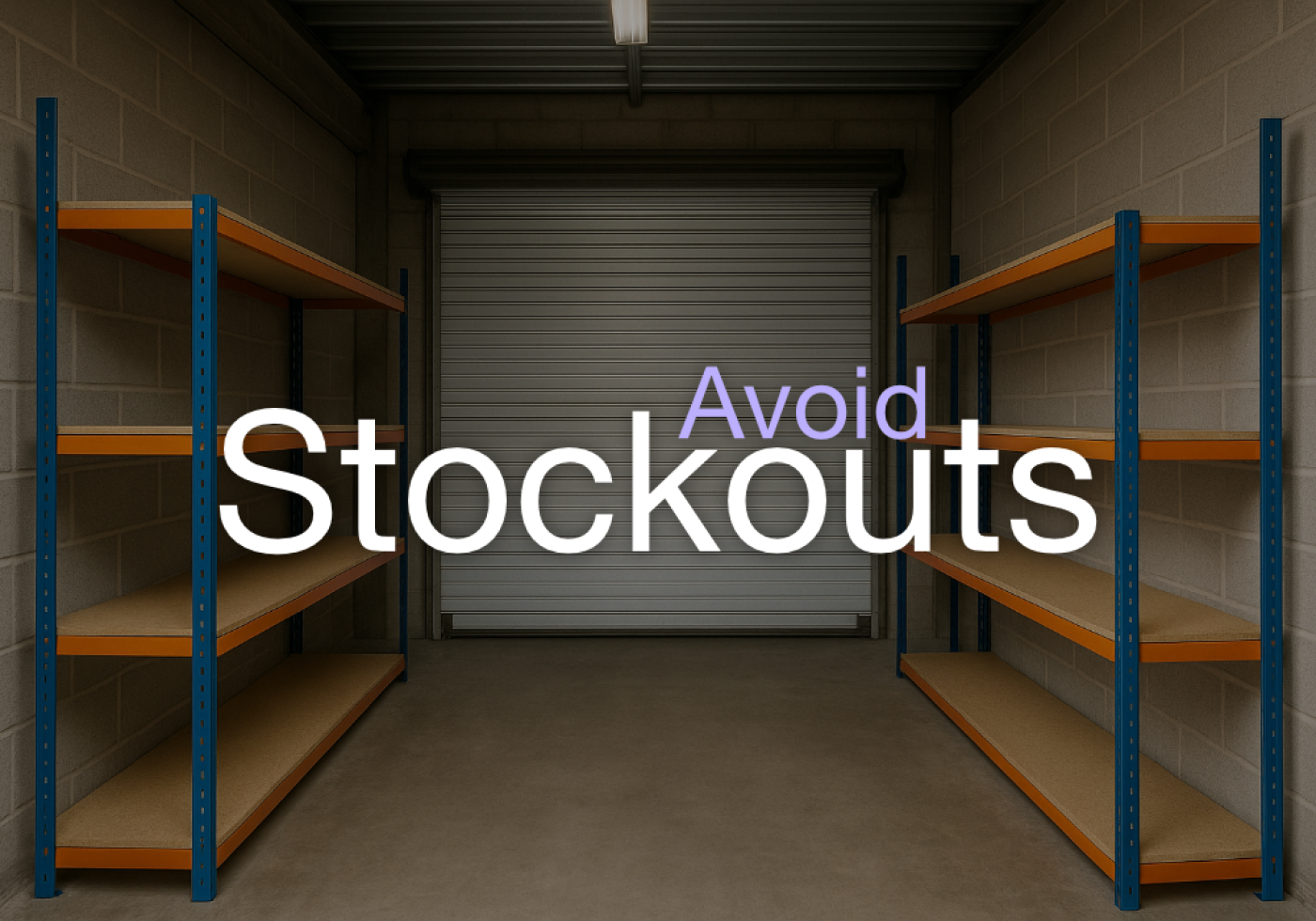Stockouts are one of the most damaging problems Amazon sellers can face. Running out of inventory doesn’t just mean missed sales—it affects your rankings, your reputation, and your long-term profitability. In this article, we’ll explore the root causes of stockouts, their consequences on your Amazon business, and actionable steps to improve stock control. We’ll also show how Amzigo’s product analysis tools can help prevent these issues through real-time inventory tracking and sales insights.
Why stockouts are more than just lost sales
When a listing goes out of stock, the immediate concern is obvious—you can’t make sales if you have no inventory. But the ripple effects go far deeper.
Amazon’s algorithm prioritises listings that generate consistent conversions. If your product goes out of stock, you lose sales velocity and potentially drop in rankings. Even a short-term stockout can take weeks to recover from. It also impacts your Buy Box eligibility, customer trust, and can lead to a rise in negative feedback if pre-orders are delayed or cancelled.
In short, stockouts directly threaten your performance metrics, seller reputation, and revenue growth.
Understanding the causes of stockouts
Most stockouts don’t happen suddenly—they result from poor forecasting, limited visibility, or gaps in the inventory chain. Here are some common triggers:
- Over-reliance on manual spreadsheets or outdated stock systems
- Unexpected surges in sales (e.g. after a promotion or a positive review boost)
- Delayed restock orders from suppliers
- Lack of real-time sales data across marketplaces
- Failure to account for lead times and shipping delays
Even seasoned Amazon sellers can be caught off guard if their systems aren’t built to react quickly.
The role of stock optimisation in preventing stockouts
Stock control isn’t just about reordering when inventory runs low—it’s about proactive planning, informed by accurate data.
Optimised stock management allows you to balance availability without overstocking. That means knowing how many days of inventory you have left, which products are selling fastest, and which ones might need a pause on restocking. It also includes understanding sales cycles, seasonality, and changes in buyer behaviour.
By maintaining just the right amount of inventory, you reduce the risk of running out while also avoiding excess storage fees from Amazon FBA.

How Amzigo helps Amazon sellers avoid stockouts
Amzigo includes a powerful Product Analysis section designed to help sellers stay ahead of stockouts. This feature delivers real-time data across your listings and marketplaces, helping you monitor key inventory metrics:
- Days of inventory left – Know exactly how long your current stock will last based on recent sales velocity
- Recommended restock quantities – Get actionable guidance on how much to reorder and when
- Conversion rate tracking – Understand how your listings are performing and whether changes in traffic or reviews are affecting demand
- Sales and order monitoring – Spot trends early and adjust inventory planning in real time
By centralising this information into one dashboard, Amzigo allows you to make fast, informed decisions—so you’re not guessing when to restock or which products need priority.
Smart practices to keep your inventory under control
In addition to using tools like Amzigo, there are several habits sellers can adopt to stay in control of stock and reduce the risk of running out.
Forecast based on real trends, not assumptions. Use historical sales data and recent performance to project demand accurately. Don’t rely solely on averages—factor in seasonality and promotional spikes.
Set safety thresholds for each SKU. Build a buffer so you have time to react if sales increase or shipments are delayed. This is especially important for best-sellers and high-converting listings.
Diversify your supply chain where possible. If you depend on a single supplier or fulfilment route, a single delay can cascade into stock issues. Have contingency plans or backup vendors for critical products.
Regularly audit your listings and inventory reports. Sometimes stock discrepancies are caused by listing errors or mislabelled SKUs. Catching these early helps prevent false stockouts or delayed restocking.
Conclusion
Stockouts can silently damage your Amazon business long after the shelves are empty. The key to avoiding them lies in accurate forecasting, proactive inventory planning, and real-time data. With Amzigo’s product analysis features, sellers can monitor key performance metrics, track inventory levels, and take action before a stock issue arises. By combining smart habits with reliable tools, you can protect your rankings, maintain sales flow, and stay ahead of the competition.
Looking to take your Amazon business to the next level?
Discover how Amzigo's advanced features, like our Automated Review Centre, Product Analysis, and Inventory Management, can transform your selling experience. Check out our features and try it for free!



